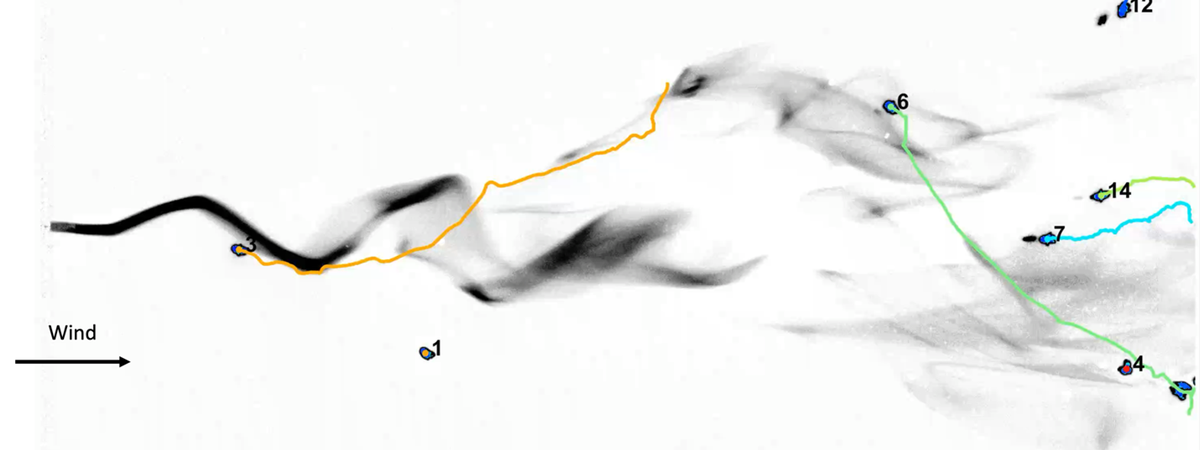For many animals, survival depends on the ability to navigate odor plumes to their sources. This task is complicated by turbulent air motions, which break continuous odor streams emanating from sources into disconnected odor patches swept by the wind. Animal studies have revealed a general strategy to navigate odor plumes is to reorient upwind when the odor is present, but go crosswind when signals become sparse to regain contact with the plume. In this strategy, the main directional cue is provided by the wind direction. I will report on our discovery that fruit flies also detect the direction of motion of odor packets. Fluid simulations and theory shows that odor motion provides a secondary directional cue, which points towards the center of the odor plume and therefore is complementary to the wind direction. Using a virtual reality setup to decouple wind from odor signal, we find that flies detect odor motion from the temporal correlations of the odor signal between its two antennae, in a computation similar to motion detection in vision. Manipulating spatio-temporal correlations in the virtual odor signal demonstrates that flies indeed exploit odor motion when navigating odor plumes. In sum, our results show that Drosophila can compute the direction of motion of odors independent of the wind, and that they use this capability in natural plume navigation. This work suggests a novel role for previously observed bilateral signal processing in the olfactory circuit.
Smelling odor motion enhances olfactory navigation
Host: Josh Milstein


